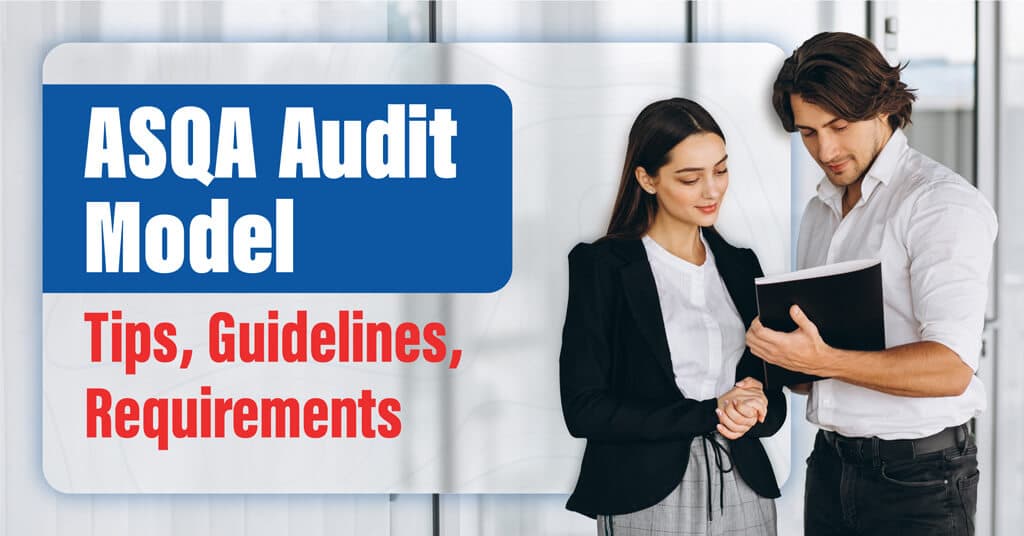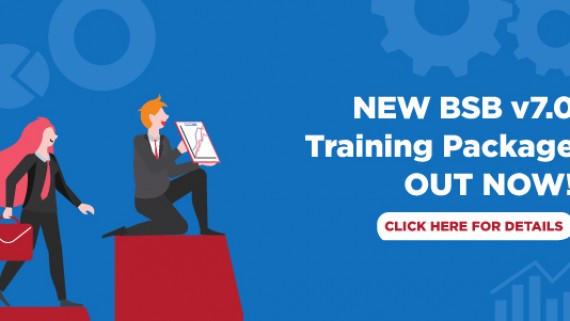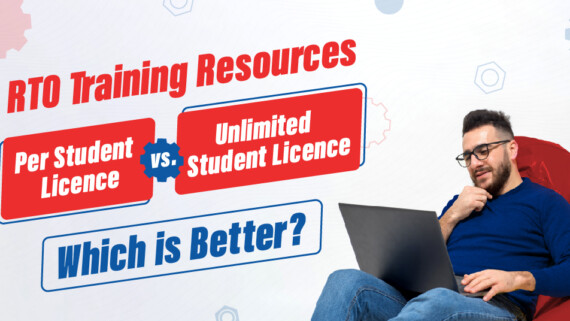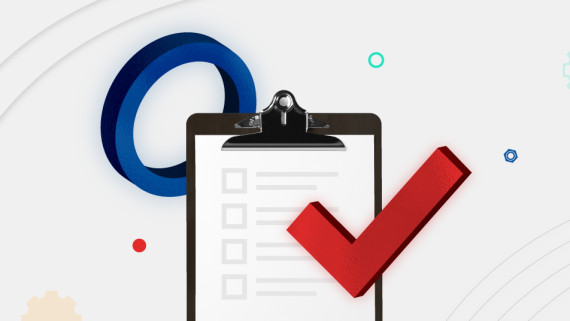The Beginner’s Guide to ASQA Audit Model and Performance Assessment (Audit)
Part of ASQA’s role as a regulator is to assess the performance of RTO practices and CRICOS providers. While these performance assessments or ASQA RTO audits help ensure the integrity of Australian training providers, it’s still a daunting, lengthy and costly process that causes even seasoned RTO managers to break a sweat. We walk you through the five-stage process, what to expect in terms of cost and how to prepare.
The ASQA audit model is built around assessing RTO compliance with the Standards for Registered Training Organisations (RTOs) 2015. For RTOs who teach overseas students, the National Code of Practice for Providers of Education and Training to Overseas Students 2018 also applies.
A performance assessment is necessary:
- If you’ve made an application to be a provider, change your scope or renew your registration.
- If ASQA has data or information that indicate that your RTO may be at risk of not meeting each of your regulatory obligations.
- As part of ASQA’s monitoring process to sample random providers.
Interested in starting your own RTO? Check out our Definitive Guide to Registered Training Organisations.
When the time comes and your RTO is to undergo an audit, here is everything you need to know.
What does the ASQA audit model look like?
The ASQA RTO audit considers three key questions:
- Does your practice align with the requirements of the Standard?
- Do you have a system for ensuring ongoing compliance with the Standard?
- Do you regularly monitor, review, and continuously improve (self-assure) to ensure compliance with the Standard?
5 key steps of the ASQA audit model
The assessment process is well defined and you can expect these five standard phases as part of your audit:
-
Initial contact
First, the performance auditor will call you to discuss the following matters:
- The reasons for the audit
- The performance assessment process
- Dates for the opening meeting and interviews
- Where your interview will take place; onsite or video conferencing
ASQA will then email these details together with their request for initial information, which may include:
- Contact information of students to interview them
- Up to date information on student enrolment and completion numbers
Then, the scope of the audit is planned by reviewing your profile and the following risk factors:
- Enrolment and completion data
- Compliance history
- Current and past complaints
- Intelligence from other regulators and agencies
- Applications that will be considered as part of the performance assessment, where applicable
The auditor will then hold an opening meeting with you. This meeting is between you and the auditor. The assessor will take you through the whole process again. You can also ask questions and provide the assessor with additional information about your organisation.
During the initial contact, take careful notes of the details that have been discussed with you by the auditor. Make sure to ask questions and clarify any information that you are unsure of.
Read our related article Will Your RTO Meet ASQA’s Requirements Next Audit?
-
Collecting and analysing evidence
After your opening meeting, the auditor will ask for more information, which they will validate during interviews. Evidence will be collected via:
Information requests via email
Evidence will vary depending on the scope of audit but may include:- Policies and procedures, and training and assessment strategies
- Photographs of the premises
- Student files, including enrolment forms and completed student assessments
- Trainer or assessor records
- Other documents and evidence relevant to the scope of your audit, such as training materials
Virtual or onsite observations
These include the facilities and physical and virtual training and assessment equipment and resources. Your training resources are also part of the observations, so it is essential that you acquire compliant training materials.
Depending on the scope of your performance assessment, ASQA may or may not do site visits.
Interviewing you, your trainers, assessors, students, and others
Interviews may be held on site or via video conferences. The interviews aim to help ASQA understand how your organisation operates, clarify and verify the information you have provided, and explore your organisation’s performance against the standards.
To avoid delays on audit, your RTO needs to be cooperative and provide all the needed information and document that the auditor asks throughout the audit process.
-
Closing meeting
As part of the interview process, the auditor holds a closing meeting where they discuss their findings or any issues they have identified during the performance assessment to date. After this meeting, the auditor will:
- Review any additional evidence
- Prepare the ASQA audit report
- Make recommendations to ASQA
At this moment, you will already have an idea of what the audit result will be. If you feel like you will get a non-compliant result, review further your compliance practices and your training resources. You should also prepare the additional evidence that might be asked from you.
-
ASQA audit report
At this point, the auditor will write the assessment report to identify compliance and non-compliance. When you are found non-compliant, it means that ASQA believes that your practice will impact your students and the community. This generally covers systemic issues that pose greater risks.
Whether you are found compliant or not, the more important part is how you will execute your next steps as evidence for future compliance.
-
Next steps
Finally, ASQA will share its findings with you and outline the next steps. If they found that you are compliant, you will receive a letter, and you don’t need to take any further action. All you need to do is to continue what you have been doing.
However, if you are found to be non-compliant, ASQA will send you your audit report and a notification letter. The letter indicates the next steps you will need to take. You will have the opportunity to respond and make rectifications. You are expected to assess the impact of non-compliant practices on your current and past students. You will also need to provide evidence that you have taken actions to correct the practices to ensure compliance in the future.
We recommend reading Why Many RTOs Fail Clause 1 of the Standards for RTOs.
How much does an ASQA audit cost?
Undergoing an audit can be costly. A fee of $250 per hour, per auditor is payable for conducting performance assessments. This excludes those conducted as part of the initial registration application.
The fee includes:
- Planning and conducting the audit
- Preparing the ASQA audit report
- Any other business process related to the audit incurring a staff member’s time
This is according to ASQA’s Guide to fees and charges effective 1 July 2022.
How to prepare your RTO for an ASQA audit?
Always employ best practices within your organisation. The best way to prepare for an ASQA RTO audit is to maintain sound policies, processes and systems, acquire quality training resources, and ensure that your staff consistently put these into practice in your everyday operations.
If you’re not confident in this area, and especially if you don’t have the in-house team to manage your compliance for you, an independent RTO consultant can be invaluable. Good consultants have extensive experience preparing for and going through audit – they can assist with regular ‘health checks’ between audits, help with preparations before audit, be on site to assist on the day, and of course help fix the problems if you get non-compliances.
We are biased in this area – but we do recommend reviewing your training resources. Are they helping you to remain compliant and deliver the best learning experience to your students? Having high-quality, compliant training materials plays a big role to the overall operations and performance of your RTO. A significant proportion of your audit will be focused on your assessment materials so it pays to have quality resources that you understand how to use.
When choosing training materials, aside from ensuring they are the best quality and have appropriate compliance features, find resources that come with an audit rectification guarantee. This not only ensures the quality of resources but also safeguards your RTO when audit comes.
See our Guide to Buying High-Quality Training Resources for RTOs.
To check if you are meeting each of your compliance requirements, you can do a regular self-assessment using ASQA’s self-assessment tool. The results of the self-assessment can serve as your starting point for developing action plans. You should also ensure that the way your staff conduct business is aligned with your documented systems and processes.
Performance assessment or audit is not troublesome if you ensure that your practices follow the standards. We hope that this article has been helpful to you! If you have further questions and concerns, do not hesitate to reach us at 1300 822 599 or fill in the enquiry form. We can also offer free samples and walkthrough of our wide-range compliant training resources.











